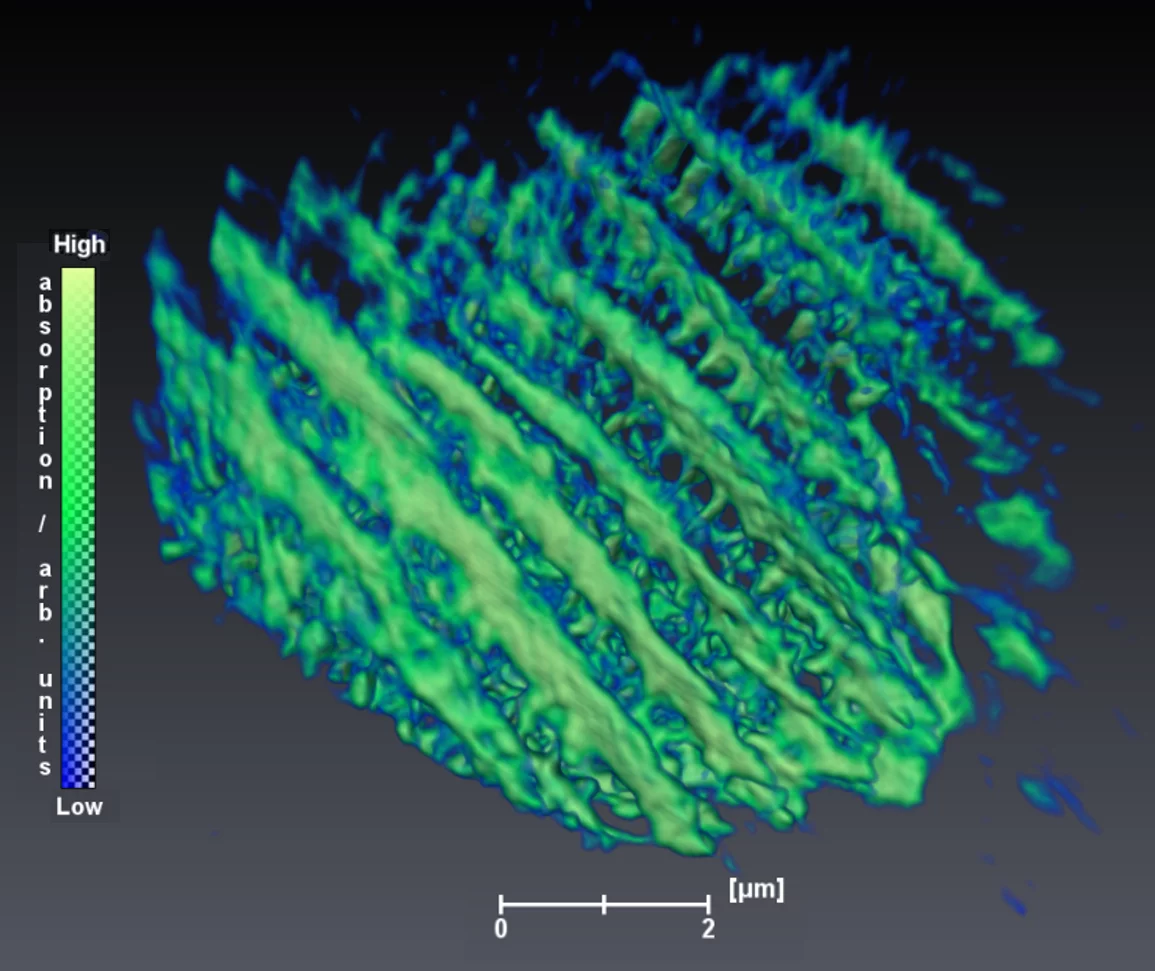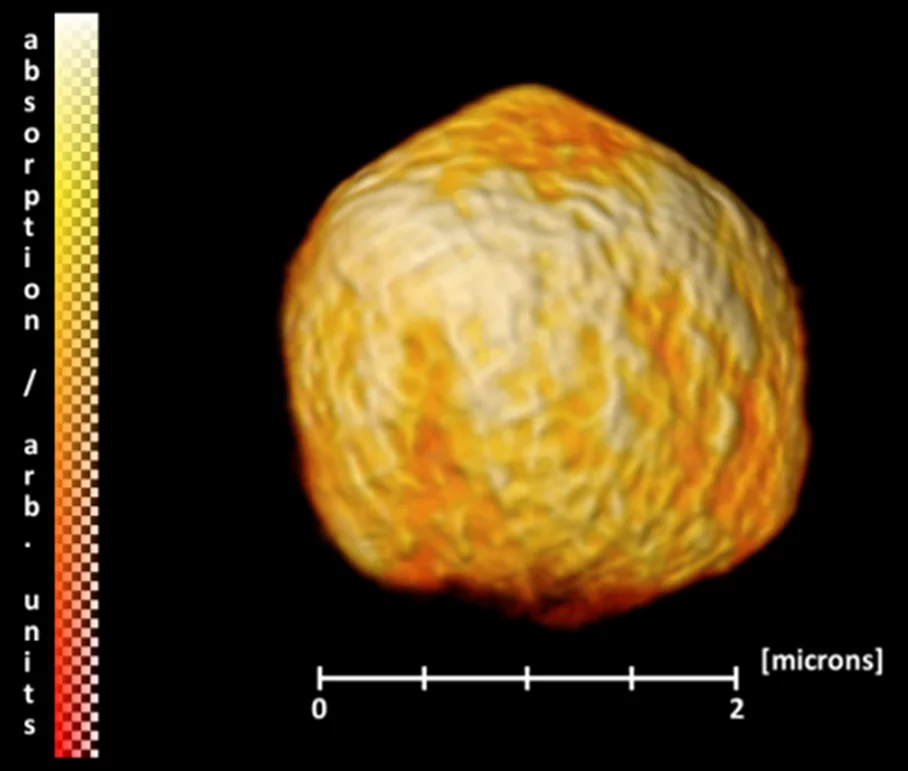Soft X-ray 3D imaging has already been realized at synchrotron radiation sources using either scanning transmission X-ray microscopy (STXM) schemes or tomography-based concepts. However, the maximum accessible sample volume is severely limited by the reduced penetration depth of the lower-energy soft X-ray radiation. This becomes even more of a drawback in the case of flat and extended specimens, which can be found in various fields of nanoscience.
The generalized geometry of laminography, characterized by a tilted axis of rotation concerning the incident X-ray beam resulting in a constant material thickness during rotation, has proven to be particularly suitable for the investigation of laterally extended and thin objects. The combination of soft X-rays and laminography provides the unique potential of bridging the gap between investigations of elaborate nanostructured thin film samples and taking advantage of the characteristic absorption contrast mechanisms in the soft X-ray range.
In collaboration with scientists from the Friedrich-Alexander-Universität Erlangen-Nürnberg, the University of Cambridge and colleagues from the cSAXS beamline of the Swiss Light Source, the research team of the PolLux endstation of the Swiss Light Source developed the new 3D imaging technique of Soft X-ray Laminography (SoXL). While the PolLux STXM already provides high spatial (nm-range) and energy resolution, its extension towards SoXL allows for a detailed three-dimensional visualization and analysis of the inner structure of sophisticated, microstructured, and magnetic objects.
The scientists demonstrated the wide range of current research areas that can be investigated using SoXL, using various examples of applications from functionalized nanomaterials, biological nanostructures with photonic properties and sophisticated magnetic materials. Especially for the latter, the properties of soft X-rays played a decisive role, providing an enhanced magnetic contrast at the L absorption edges of transition metals.
SoXL is running as a standard operation tool at the PolLux beamline and is now available for user operation of the broad community of nanomaterials and nanoscience.
Contact:
Dr. Jörg Raabe
Swiss Light Source
Paul Scherrer Institut
Telephone: +41 56 310 5193
E-mail: joerg.raabe@psi.ch
Original Publication:
From 2D STXM to 3D Imaging: Soft X-ray Laminography of Thin Specimens
Katharina Witte, Andreas Späth, Simone Finizio, Claire Donnelly, Benjamin Watts, Blagoj Sarafimov, Michal Odstrcil, Manuel Guizar-Sicairos, Mirko Holler, Rainer H. Fink, Jörg Raabe
Nano Letters, 2020
DOI: 10.1021/acs.nanolett.9b04782

